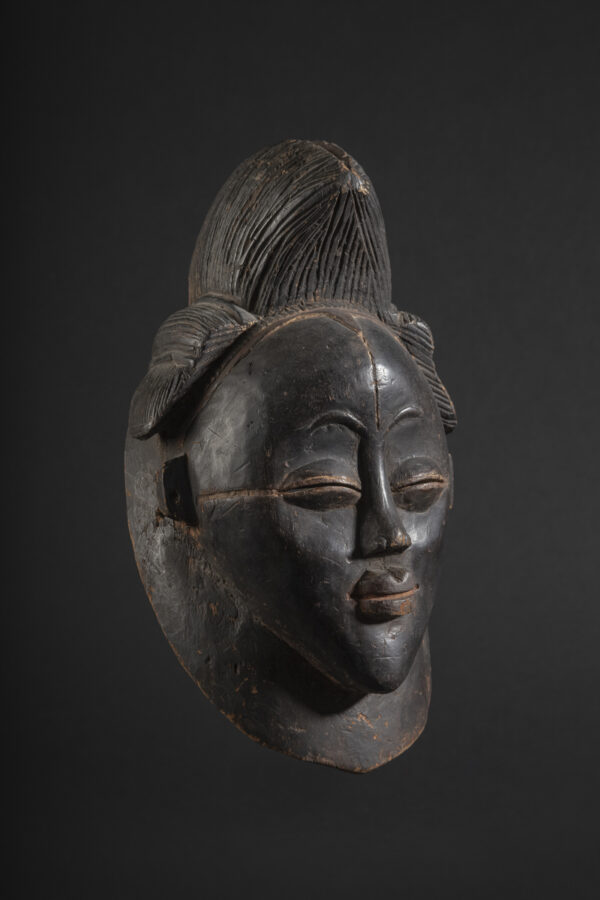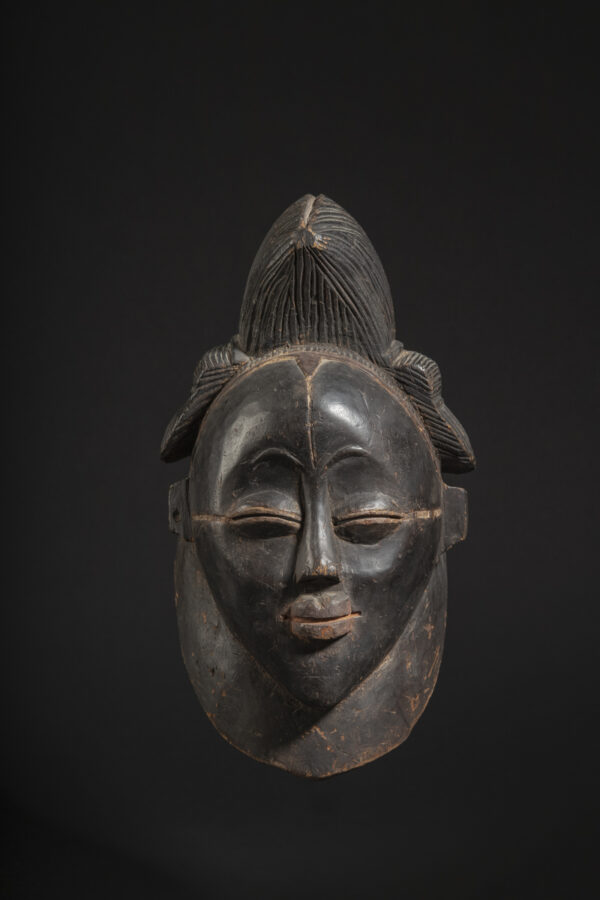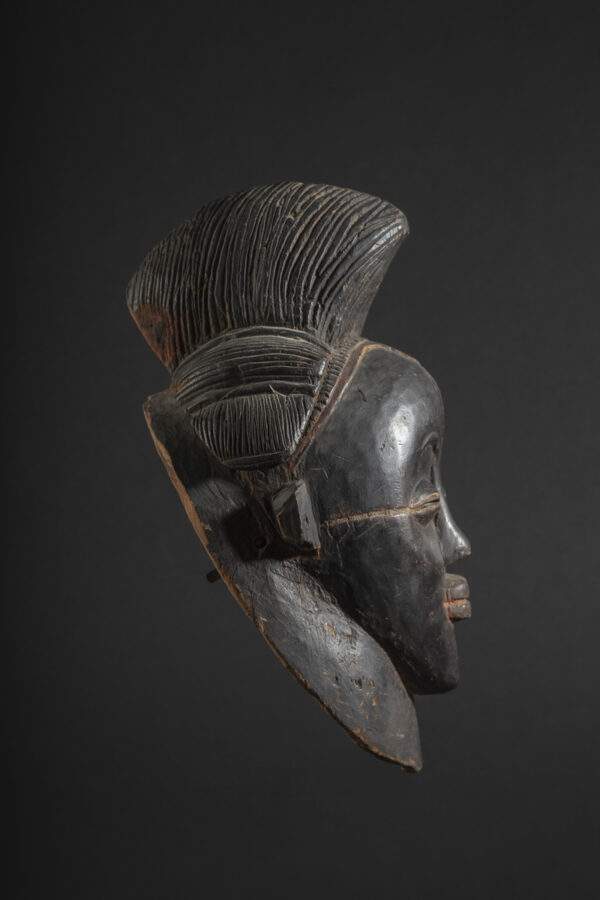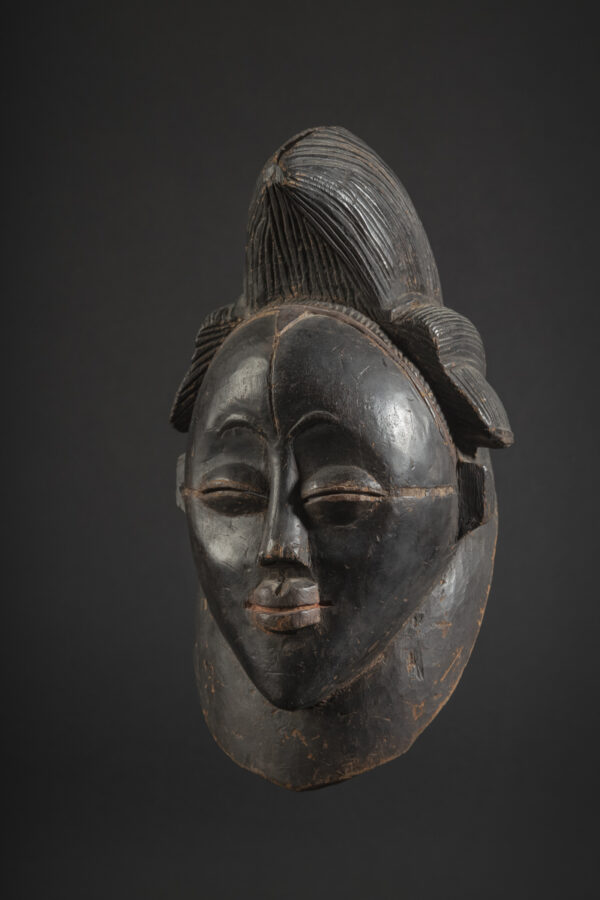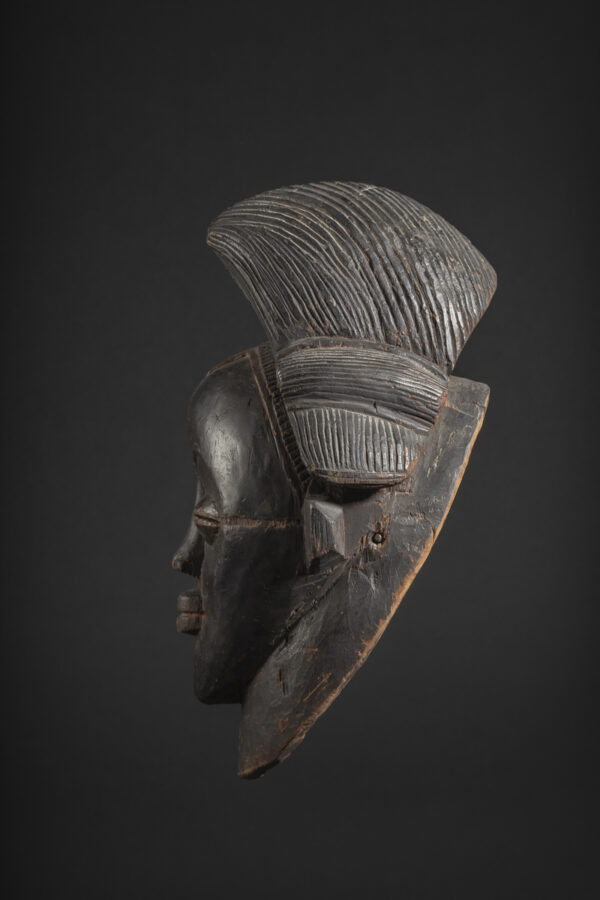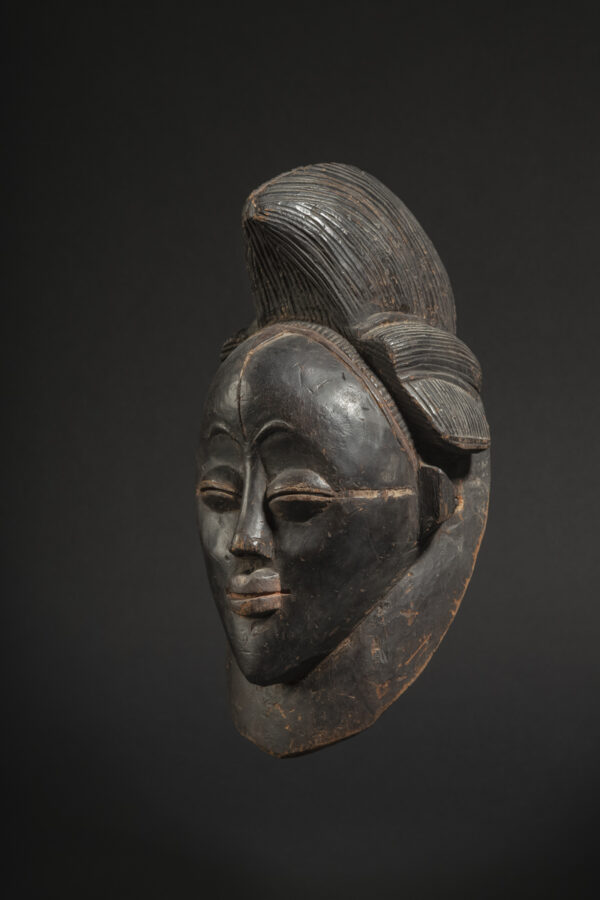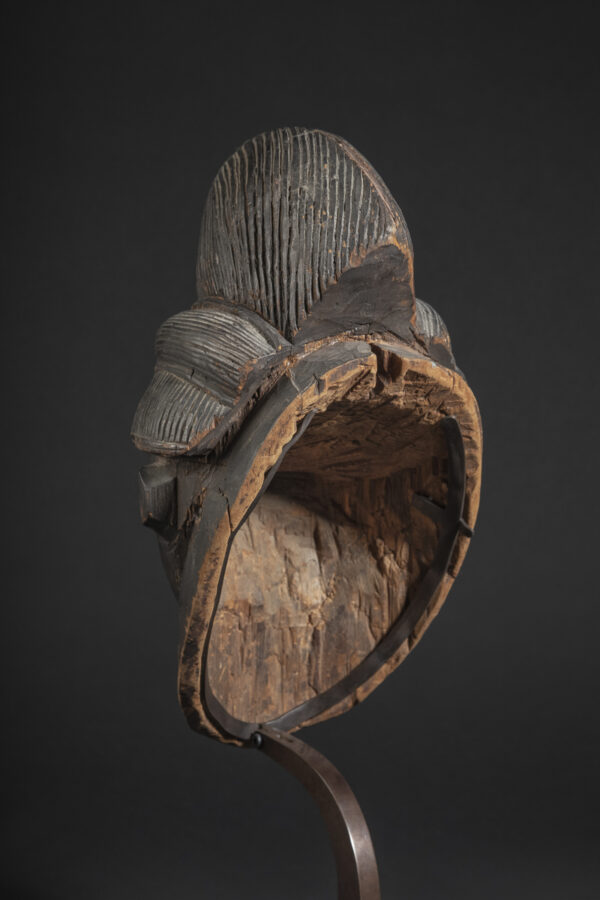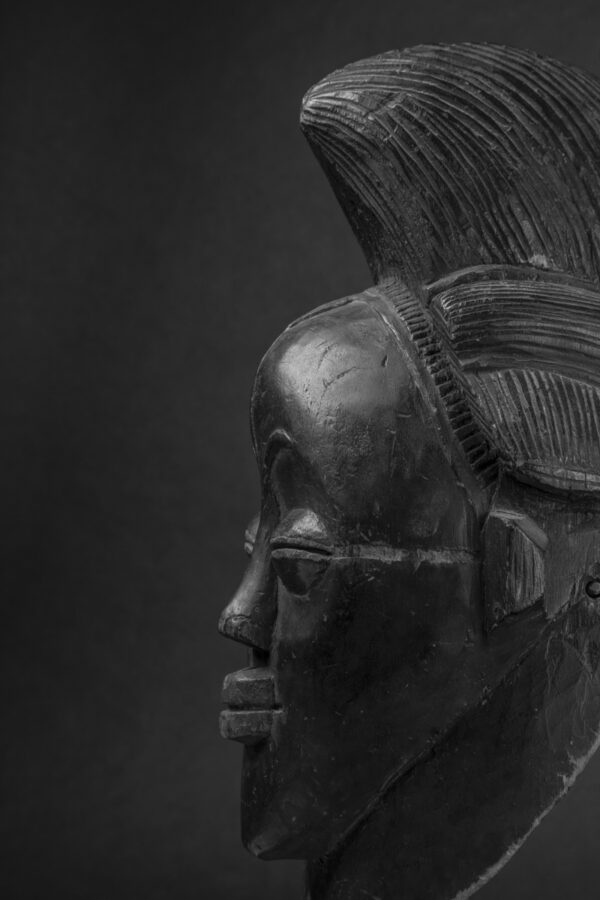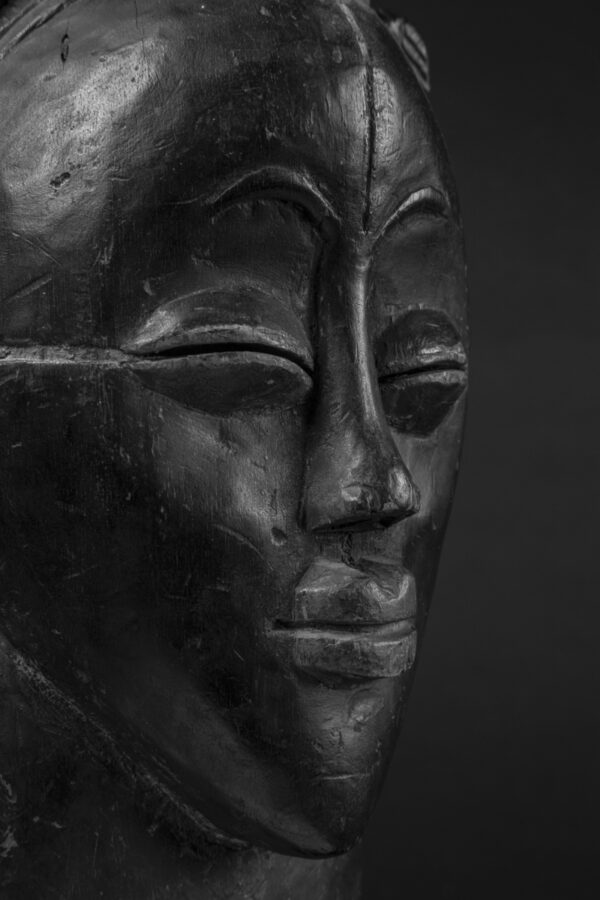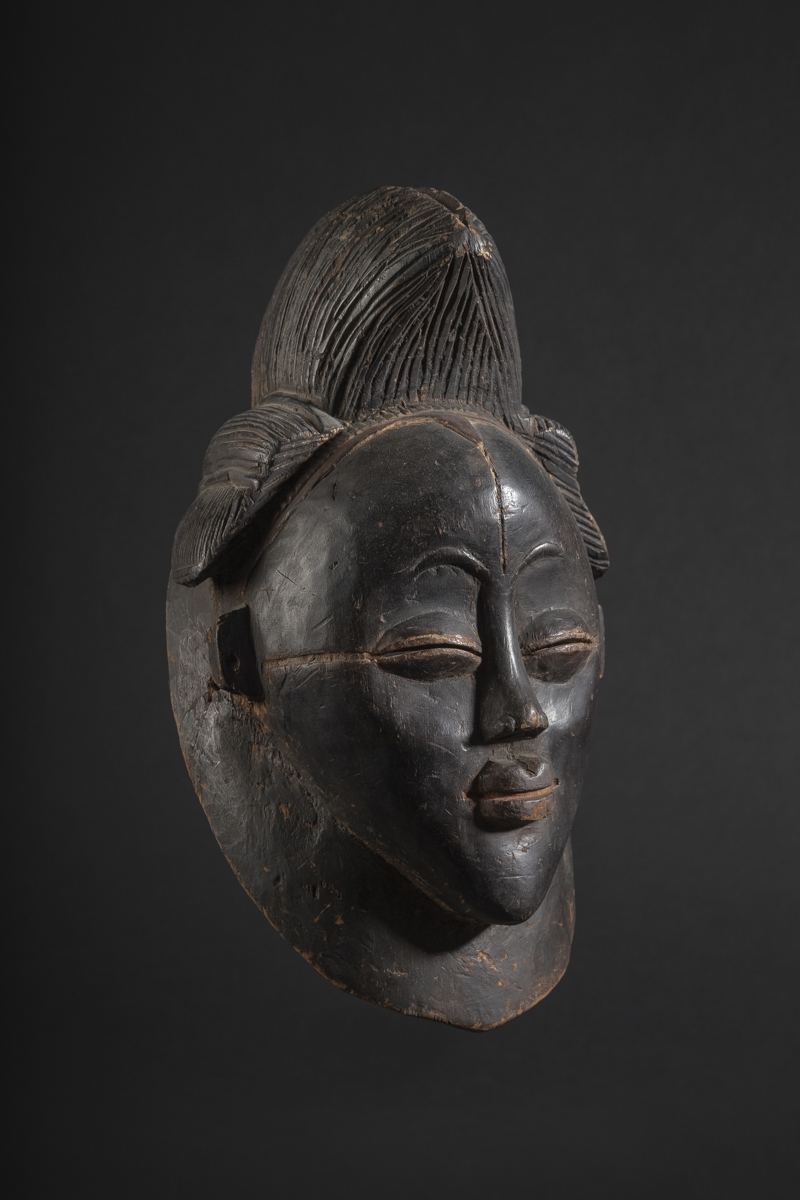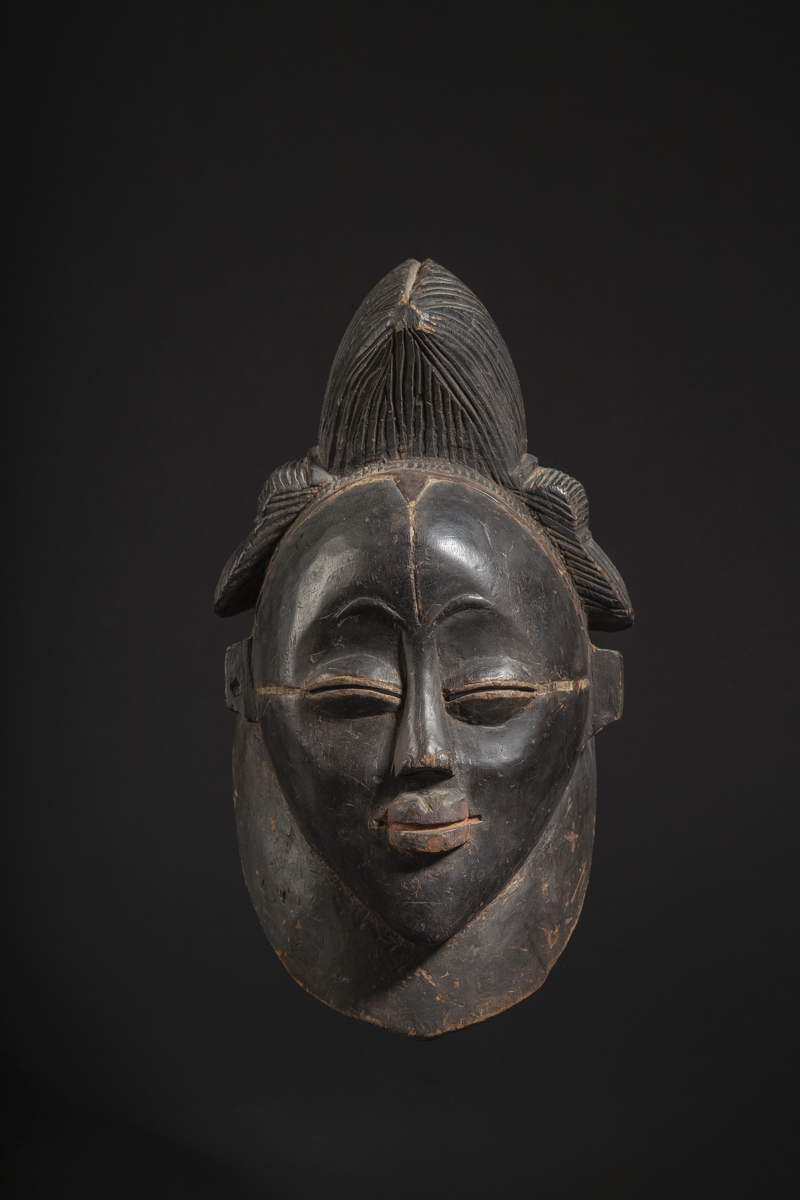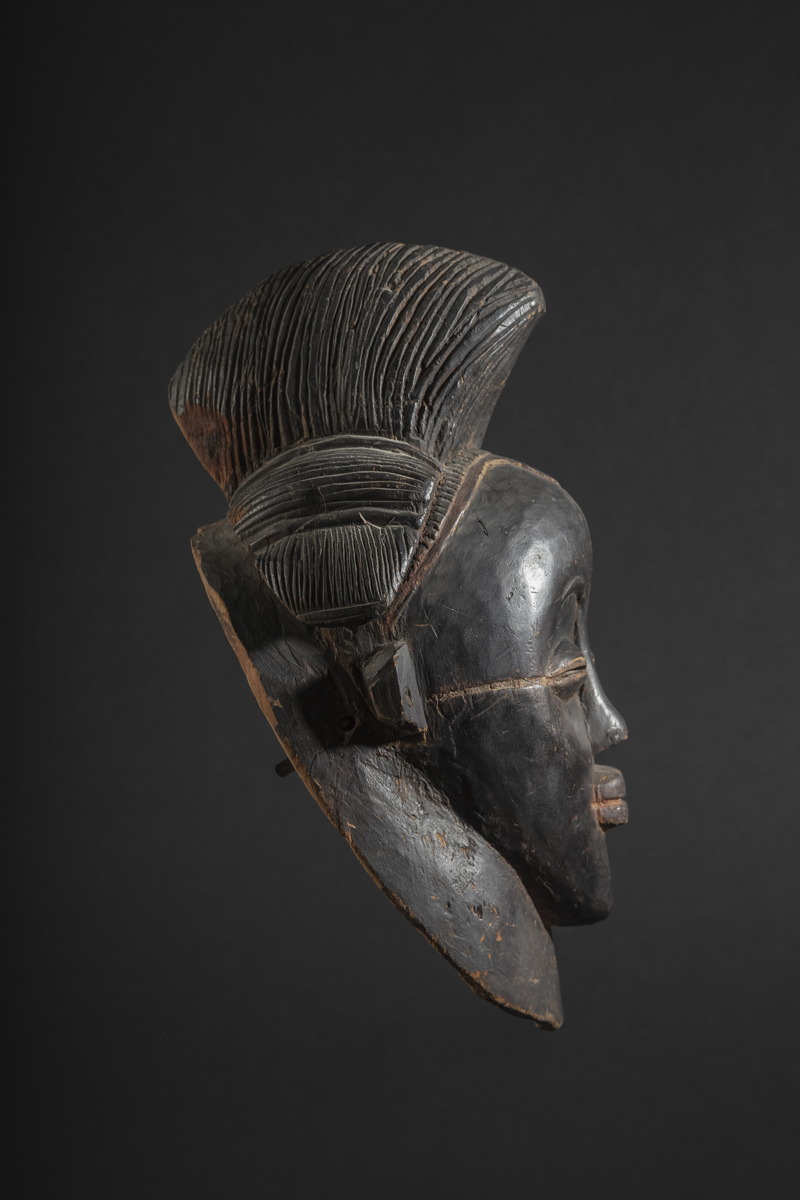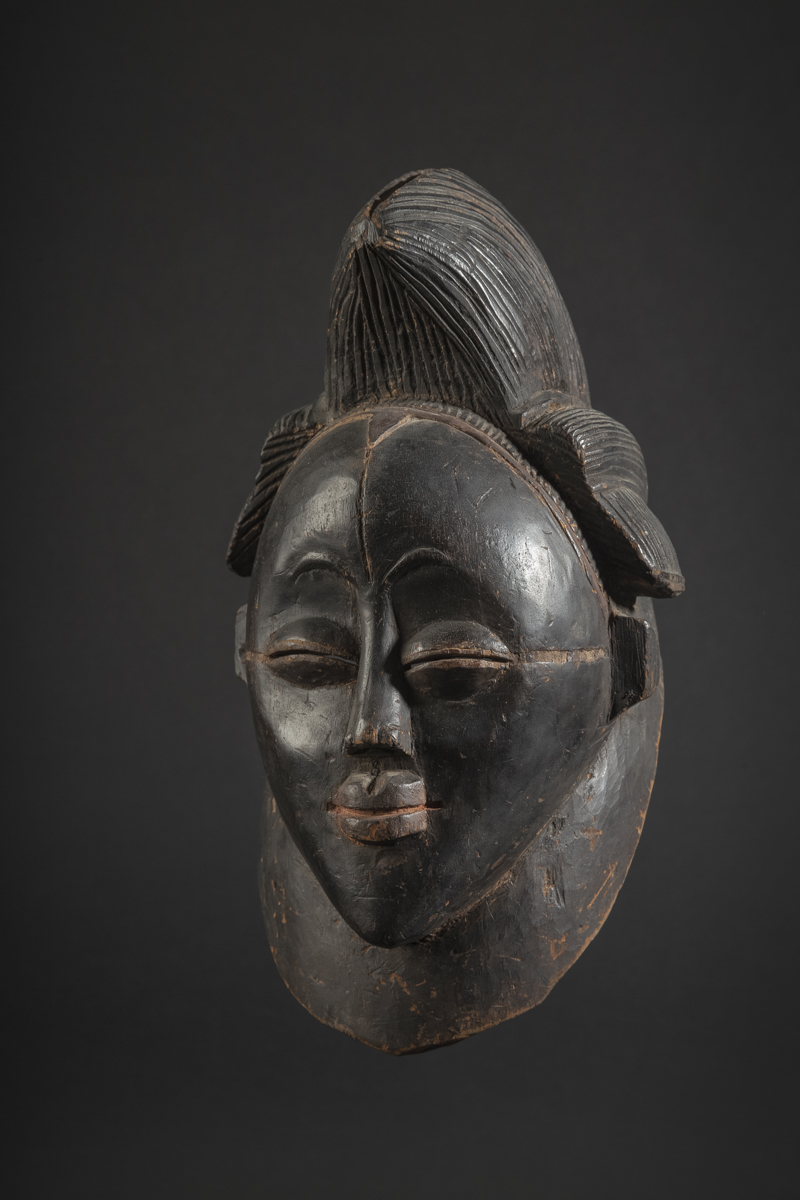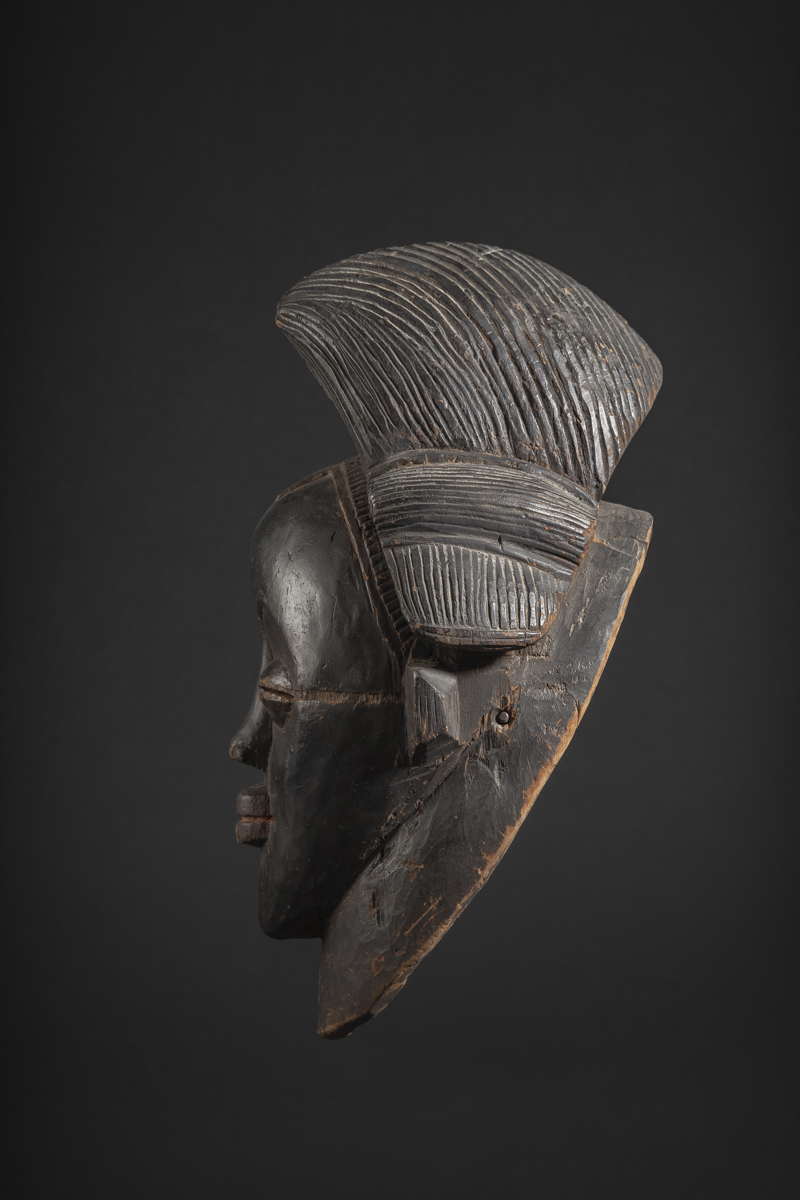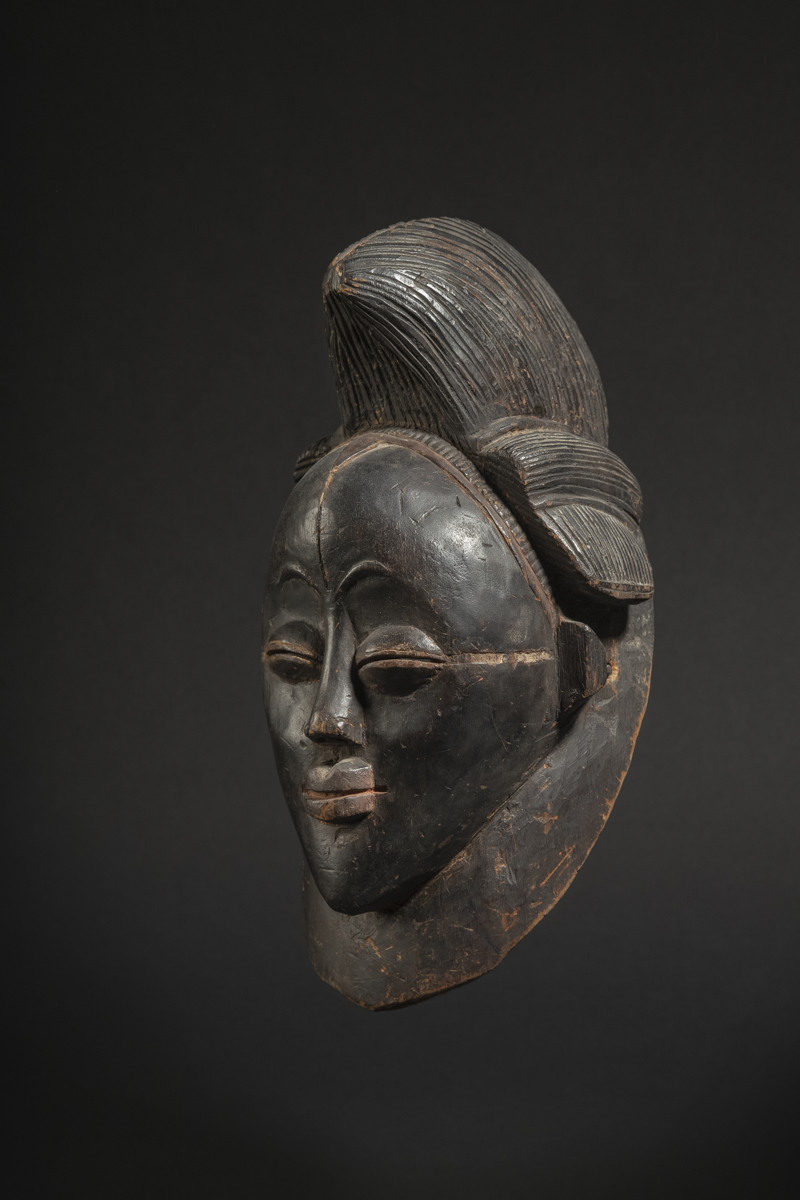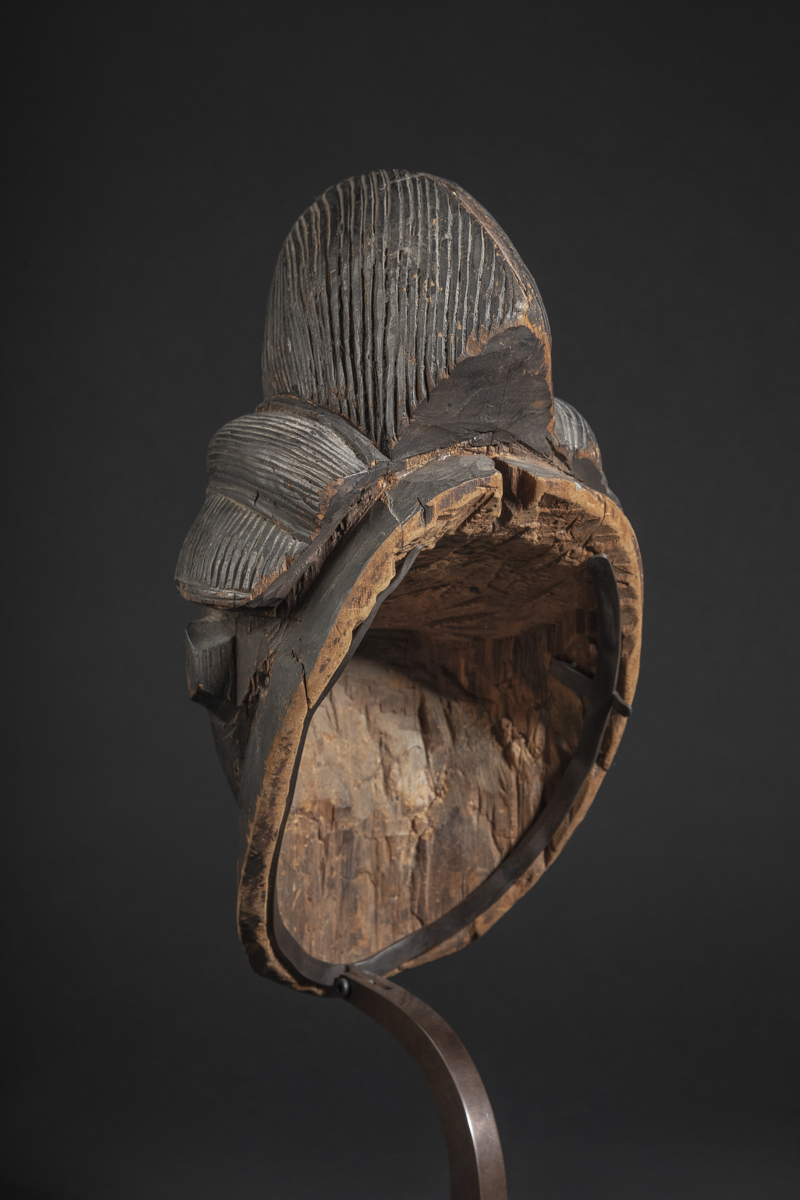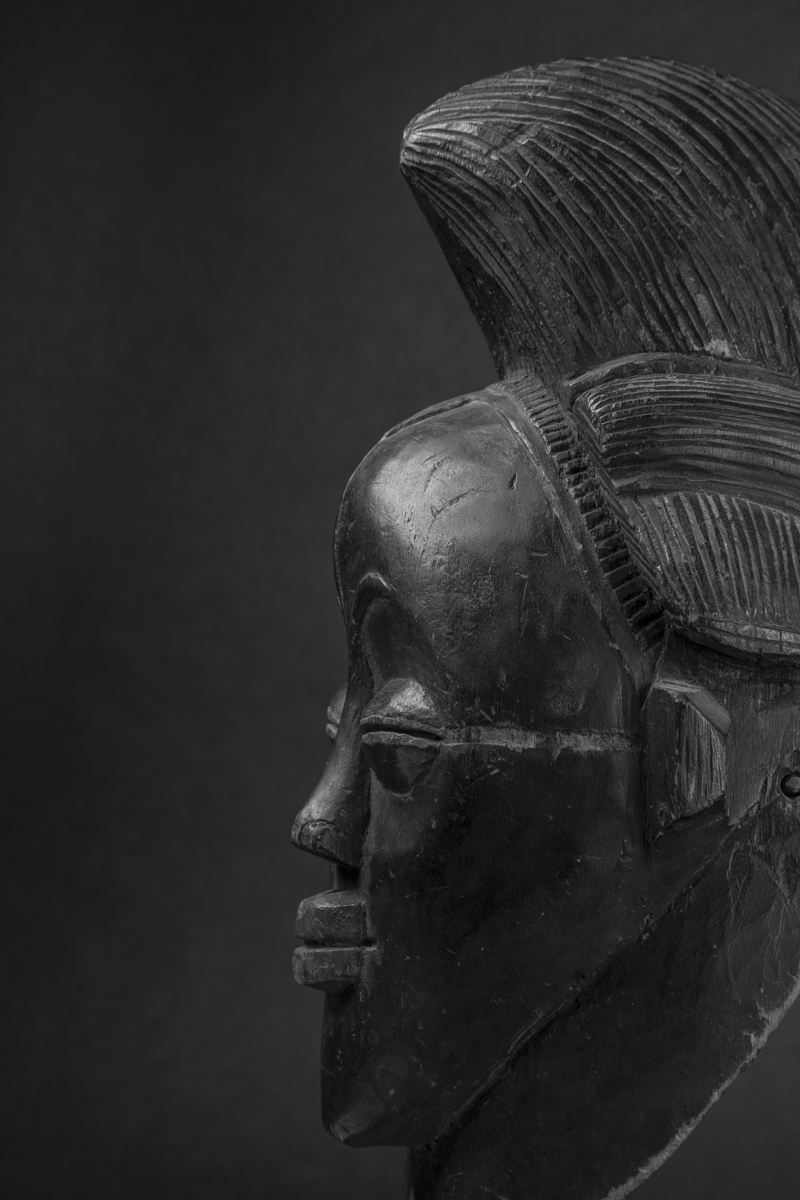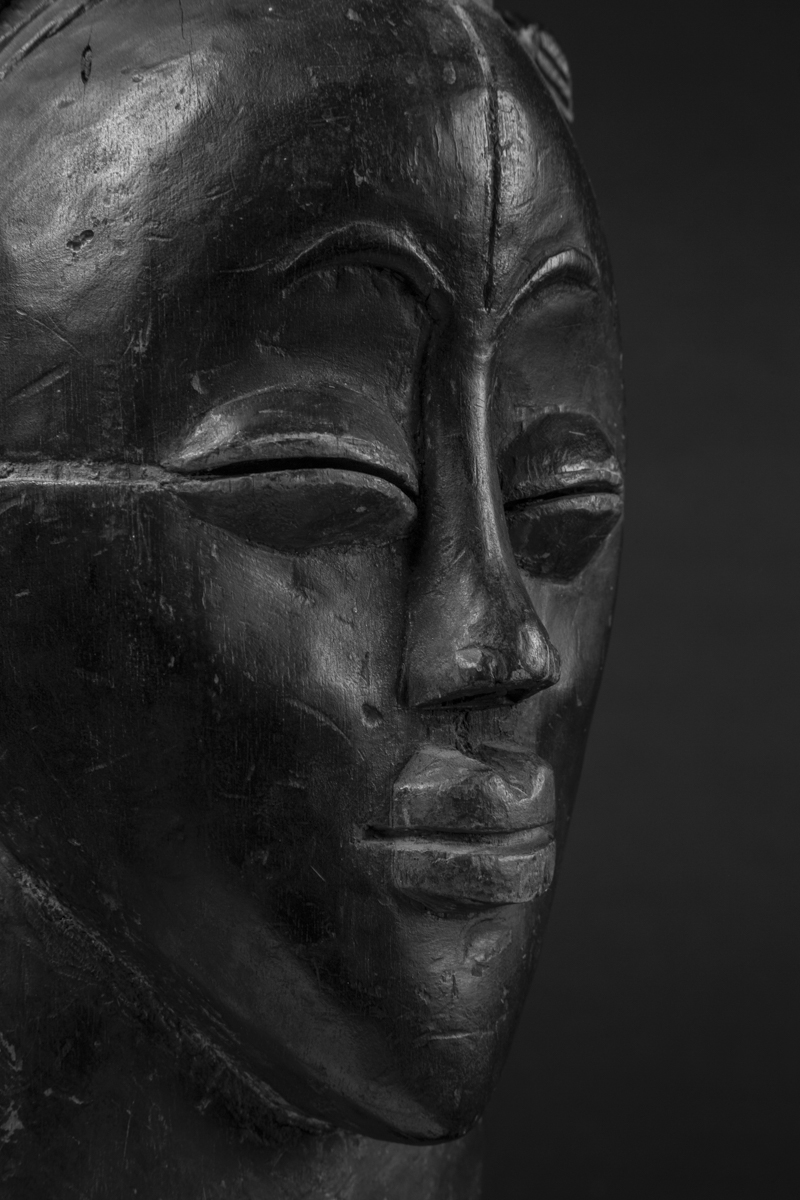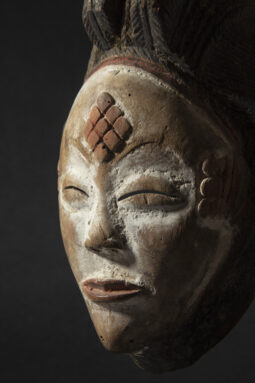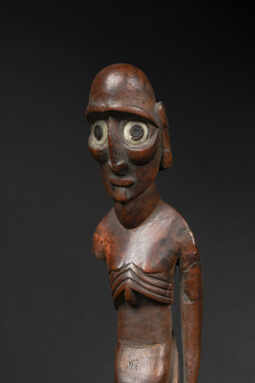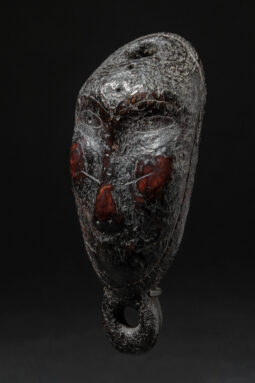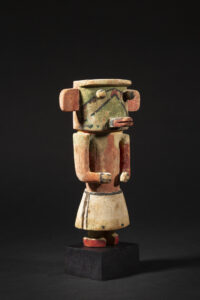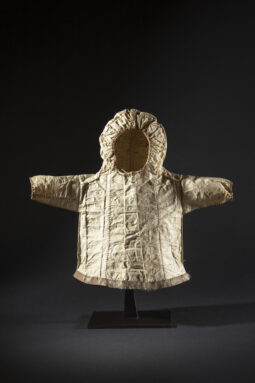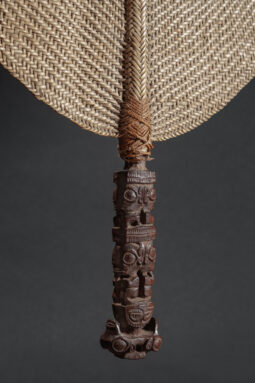Africa | Gabon
Punu Mask
Gabon
Ikwara mask
Carved wood and pigments
Early 20th century
Height: 11 ¾ in. (30 cm)
Ex collection Galerie Monbrison, circa 1980s, Paris
Ex collection Alberto Costa, Barcelona, Spain
Ex private collection, Barcelona, Spain, since the 1980s
Ikwara Punu mask 30 cm / Galerie Flak
Price on request
According to Louis Perrois, "it is a paradoxical thought that some of the masterpieces of African sculpture were created, with great skill, only to be hidden away during the rituals that they were part of. Yet this is the case for the black Punu masks, known as Ikwara masks in the region of Ngounié (South Gabon).
The very small number of these masks stands in contrast with the myriad okuyi "white" masks that embody the spirit of a deceased woman as a young maiden. They are similar in shape (face and coiffure) but are dyed entirely black and, in some cases, display bright red decorative motifs (around the eyes, on scarification patterns and sometimes on the lips). They are coated in ngula.
Although the white and black masks share similar physiognomy and idealised beauty, their colour brings to mind entirely different entities. The hue - whether black or dark brown - of the masks, identified by ethnologist André Raponda Walker and Roger Sillans (Rites et croyances des peuples du Gabon, 1962, p. 143) as Ikwara or Ikwara-mokulu, meaning "mask of the night", denotes its link to the ominous spirit world. The suave beauty of the young deceased women of the okuyi is met with the evocation of a male entity (according to LaGamma, 1995, p. 148), possibly a long-deceased community leader, or maybe an old woman from among those who were deemed experts in magical remedies.
Ikwara masks, which acted as upholders of the law (more or less along the same lines as Fang's ngil), only danced at dusk or, even more so, at night, perched on small stilts (mugèla, muri-ditengu - Walker and Sillans, 1962, p.144) and outside the village. The masks and their followers filled the role of "keepers of the peace" to resolve serious situations that would otherwise have been difficult to process through ordinary channels; they only danced in front of elders and those parties involved in a dispute. In museums and collections, black Punu masks are very rare, probably because of their potentially dangerous qualities that may have prevented the elder villagers from showing them to passing Europeans, and, if they happened upon them despite this, to be more reluctant in parting with them than with other masks that were more innocuous in terms of ritual and therefore much more easily reproduced. This functional importance also explains why some specimens were kept for such long periods of time in villages and why they were treated with such care, thus protecting their magnificent, almost lacquered patina.
So it is that ikwara masks, some of which display exquisite detailing, were ritual effigies bound in mystery, thereby ensuring their spiritual efficiency, and their very rare outings were highly dramatic. Apart from the okuyi white masks, whose dances set the rhythm for Punu daytime community assemblies, most Gabonese masks followed the same type of ritual as the black masks. They made their ephemeral, ghostly appearances at dawn or dusk, staged so that the wooden features of the entity were mostly hidden under an assembly of cloth and fibre, thus preserving their fleetingly supernatural aspect.
In the case of the ikwara masks, as with the ngil of Northern Gabon, the process was taken to extremes so the occult power of the spirit was at its strongest. As a result this mask was sculpted only to be seen by the dancers and their assistants. Indeed, their ritual efficiency, for a lot of people, was due to the fear it instilled in the parties to a dispute; a fear made even greater by the fact that the features of the great masked spirit only came out of the darkness for a few moments when the light of the flaming grass torches alighted on them."
Black Punu mask are veritable icons of classical African arts. A remarkable poetry and interiority emanate from this mask.
The very small number of these masks stands in contrast with the myriad okuyi "white" masks that embody the spirit of a deceased woman as a young maiden. They are similar in shape (face and coiffure) but are dyed entirely black and, in some cases, display bright red decorative motifs (around the eyes, on scarification patterns and sometimes on the lips). They are coated in ngula.
Although the white and black masks share similar physiognomy and idealised beauty, their colour brings to mind entirely different entities. The hue - whether black or dark brown - of the masks, identified by ethnologist André Raponda Walker and Roger Sillans (Rites et croyances des peuples du Gabon, 1962, p. 143) as Ikwara or Ikwara-mokulu, meaning "mask of the night", denotes its link to the ominous spirit world. The suave beauty of the young deceased women of the okuyi is met with the evocation of a male entity (according to LaGamma, 1995, p. 148), possibly a long-deceased community leader, or maybe an old woman from among those who were deemed experts in magical remedies.
Ikwara masks, which acted as upholders of the law (more or less along the same lines as Fang's ngil), only danced at dusk or, even more so, at night, perched on small stilts (mugèla, muri-ditengu - Walker and Sillans, 1962, p.144) and outside the village. The masks and their followers filled the role of "keepers of the peace" to resolve serious situations that would otherwise have been difficult to process through ordinary channels; they only danced in front of elders and those parties involved in a dispute. In museums and collections, black Punu masks are very rare, probably because of their potentially dangerous qualities that may have prevented the elder villagers from showing them to passing Europeans, and, if they happened upon them despite this, to be more reluctant in parting with them than with other masks that were more innocuous in terms of ritual and therefore much more easily reproduced. This functional importance also explains why some specimens were kept for such long periods of time in villages and why they were treated with such care, thus protecting their magnificent, almost lacquered patina.
So it is that ikwara masks, some of which display exquisite detailing, were ritual effigies bound in mystery, thereby ensuring their spiritual efficiency, and their very rare outings were highly dramatic. Apart from the okuyi white masks, whose dances set the rhythm for Punu daytime community assemblies, most Gabonese masks followed the same type of ritual as the black masks. They made their ephemeral, ghostly appearances at dawn or dusk, staged so that the wooden features of the entity were mostly hidden under an assembly of cloth and fibre, thus preserving their fleetingly supernatural aspect.
In the case of the ikwara masks, as with the ngil of Northern Gabon, the process was taken to extremes so the occult power of the spirit was at its strongest. As a result this mask was sculpted only to be seen by the dancers and their assistants. Indeed, their ritual efficiency, for a lot of people, was due to the fear it instilled in the parties to a dispute; a fear made even greater by the fact that the features of the great masked spirit only came out of the darkness for a few moments when the light of the flaming grass torches alighted on them."
Black Punu mask are veritable icons of classical African arts. A remarkable poetry and interiority emanate from this mask.
Publication
Explore the entire collection
